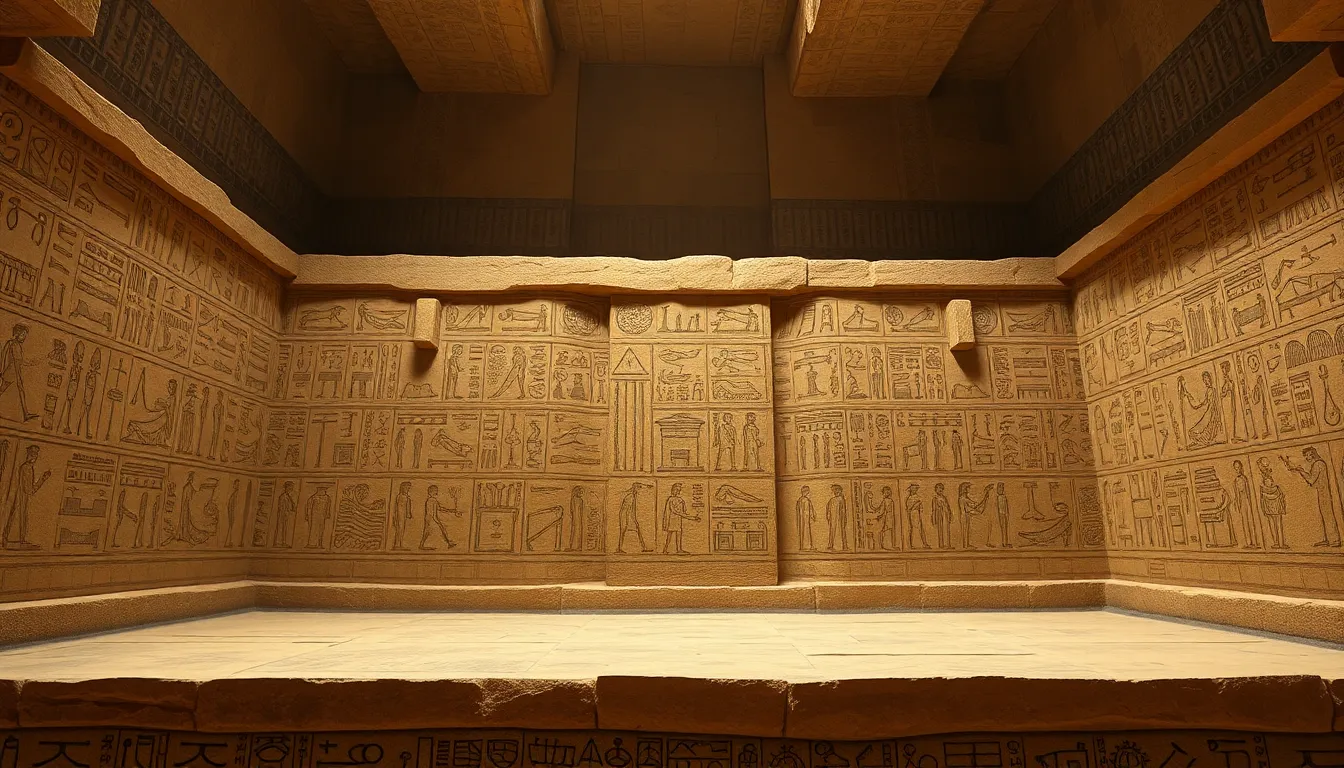Decoding Hieroglyphs in Royal Tombs: A Linguistic Journey
I. Introduction
Ancient Egyptian hieroglyphs represent one of the most fascinating and complex writing systems in human history. This intricate form of communication served not only as a means of record-keeping but also as a profound expression of the beliefs and values of ancient Egyptian society. Royal tombs, in particular, provide invaluable insights into the hieroglyphic language, revealing the cultural, religious, and political narratives of the time.
The purpose of this article is to explore the significance of hieroglyphs found in royal tombs, examining their historical context, structural components, and the ongoing efforts to decode these ancient texts. By delving into notable discoveries and case studies, we aim to illuminate the critical role these inscriptions play in our understanding of ancient Egyptian civilization.
II. The Historical Context of Hieroglyphs
The origins of hieroglyphic writing can be traced back to the early dynastic period of Egypt around 3100 BCE. Initially, this system evolved from pictorial representations of objects and concepts, gradually developing into a sophisticated means of communication that combined phonetic and ideographic elements.
Hieroglyphs played a crucial role in ancient Egyptian society, serving various functions:
- Religious texts and rituals
- Administrative documentation
- Commemorative inscriptions in tombs and temples
Royal tombs, such as those in the Valley of the Kings, are significant cultural artifacts that provide a wealth of information about the beliefs and practices of the time. The inscriptions found within these tombs offer glimpses into the afterlife, royal lineage, and the divine connection of pharaohs.
III. The Structure of Hieroglyphic Writing
Hieroglyphic writing consists of key components that contribute to its complexity:
- Phonetics: Representing sounds, similar to letters in alphabetic systems.
- Logograms: Symbols that represent words or morphemes.
- Determinatives: Signs that clarify the meaning of a word, often indicating its category.
Understanding the syntax and grammar of hieroglyphs is essential for accurate interpretation. Unlike linear scripts, hieroglyphs can be arranged in multiple orientations, and their meaning can change based on context. The differences between hieroglyphs and other ancient scripts, such as cuneiform, highlight the unique aspects of Egyptian writing.
IV. Discoveries in Royal Tombs
Numerous royal tombs have been uncovered, revealing rich hieroglyphic inscriptions that provide insights into the lives of pharaohs and their beliefs. Notable tombs include:
- Tutankhamun: His tomb, discovered in 1922, contained extensive inscriptions detailing his reign and the afterlife.
- Seti I: The tomb of Seti I is renowned for its elaborate carvings and inscriptions, depicting rituals and the afterlife journey.
Modern archaeological techniques, such as ground-penetrating radar and 3D imaging, have transformed the excavation and analysis of these tombs. These technologies allow researchers to uncover hidden inscriptions and study the spatial relationships of symbols within the tomb’s layout.
The Process of Decoding Hieroglyphs
The journey to deciphering hieroglyphs has been long and fraught with challenges. Historical attempts date back to the Renaissance, but significant milestones include:
- The discovery of the Rosetta Stone in 1799, which featured the same text in Greek, Demotic, and hieroglyphs.
- Jean-François Champollion’s successful decipherment in the 1820s, which established the phonetic value of many hieroglyphs.
Despite these advancements, challenges remain in the translation and interpretation of hieroglyphs. Variations in dialect, context, and the potential for multiple meanings complicate the process, necessitating a careful and nuanced approach.
VI. Case Studies: Significant Inscriptions
Famous inscriptions from royal tombs provide rich narratives about ancient Egyptian life and beliefs. For example:
- The “Book of the Dead,” found in many tombs, contains spells and prayers for the deceased, offering insights into their beliefs about the afterlife.
- Inscriptions from the tomb of Ramses II depict military campaigns and divine favor, reflecting the pharaoh’s status and ideology.
These texts not only reveal the daily lives and governance of ancient Egyptians but also their intricate cosmology and understanding of mortality.
VII. The Linguistic Impact of Hieroglyphs
The study of hieroglyphs has made significant contributions to the fields of linguistics and semiotics. Key influences include:
- The development of theories related to pictographic and logographic writing systems.
- Insights into the evolution of writing and communication in human history.
- Influences on modern languages and scripts, as some symbols and concepts have permeated contemporary culture.
Furthermore, the ongoing relevance of hieroglyphs is evident in contemporary scholarship, as researchers continue to explore their implications for understanding ancient civilizations.
VIII. Conclusion
In summary, the study of hieroglyphs in royal tombs reveals a rich tapestry of ancient Egyptian civilization, its beliefs, and its cultural practices. The historical context, structural components, and significant discoveries underscore the importance of these inscriptions in our understanding of the past.
As archaeological discoveries continue and technology advances, the future of hieroglyphic studies holds promise for new revelations about ancient Egypt. Decoding these symbols not only enhances our knowledge of a remarkable civilization but also reinforces the enduring legacy of human communication and expression.




